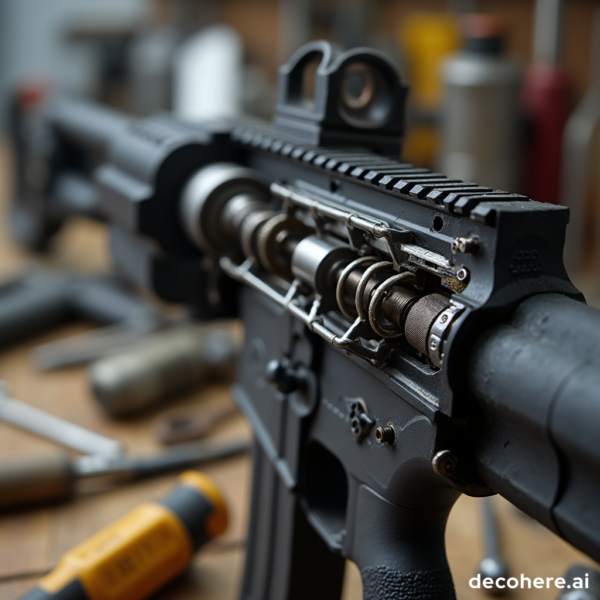Greek, Egyptian, and Religious Influences on Roman Art: Origins, Impact, and Practical Pathways
Introduction: The Foundations of Roman Art
Roman art stands as a testament to a civilization that thrived on adaptation, synthesis, and innovation. Emerging from a dynamic intersection of cultures, the art produced during the Roman era reflects the profound influence of neighboring civilizations and religious traditions. This article explores the three primary sources of influence-Greek art, Egyptian heritage, and religious practices-on Roman artistic expression. We will offer practical steps for accessing resources, studying these traditions, and understanding their enduring significance.
Greek Art: The Dominant Influence
Among the many cultures that shaped Roman art, Greek art exerted the most profound and lasting impact . The Romans admired Greek sculpture, painting, and architecture, adopting these forms and even commissioning direct copies of famous Greek works. The Roman poet Horace expressed this relationship succinctly: “Greece, the captive, took her savage victor captive,” meaning that Rome, despite having conquered Greece, was itself “conquered” by Greek culture and aesthetics [2] . Greek architecture, with its emphasis on harmony, proportion, and the use of columns, became the blueprint for Roman temples and public buildings. Roman temple architecture, for example, was heavily influenced by Greek design, with adaptations emphasizing the entrance and facade [4] .
In sculpture, Romans frequently produced marble versions of lost Greek bronzes, preserving the legacy of artists like Phidias and Praxiteles. Roman artists and patrons valued the realism and idealism of Greek statuary, which became a standard for Roman portraiture and public monuments. To study Greek influence on Roman art today:
- Visit museum collections such as the Metropolitan Museum of Art and the British Museum, which house extensive Roman works inspired by Greek originals.
- Explore academic resources and online databases by searching for “Roman copies of Greek sculpture” and “Roman architecture influenced by Greece.”
- Consider courses on classical art history through accredited institutions, focusing on periods of Roman adaptation of Greek forms.
Challenges include distinguishing Roman innovations from Greek originals, as Roman artists often personalized their works to reflect local tastes and political contexts. It is important to compare stylistic elements and consult scholarly analyses for nuanced understanding.
Egyptian Art: Exoticism and Adaptation
Egyptian art and culture also played a significant role in shaping Roman artistic expression , particularly after the conquest of Egypt and its incorporation into the Roman Empire [1] . Egyptian motifs such as obelisks, sphinxes, and hieroglyphs appeared throughout Roman architecture and sculpture, most notably in the decoration of public spaces and religious sites. The cult of Isis, an Egyptian mother goddess, gained immense popularity, influencing both the style and subject matter of Roman religious art [3] .
Romans created Egyptian-inspired pastiches, combining exotic symbols with Roman settings. The Iseum Campense in Rome, dedicated to Isis, featured pleasure gardens, wall paintings, obelisks, and statues reminiscent of Egyptian temple complexes. Funerary arts evolved as well, with traditional Egyptian imagery merging with Greco-Roman styles-panel portraits painted in illusionistic fashion, accessorized with Roman hairstyles and clothing [1] .
To access Egyptian influences in Roman art:

Source: childhealthpolicy.vumc.org
- Search for exhibitions on Romano-Egyptian art at major museums or online archives, using keywords such as “Roman Egypt” and “Isis cult in Rome.”
- Read scholarly articles discussing the adaptation of Egyptian motifs in Roman sculpture and architecture.
- Engage with virtual tours of archaeological sites featuring Egyptian-inspired Roman monuments.
Potential challenges include identifying authentic Egyptian elements versus Roman interpretations. Many Roman works were created more for spectacle than for faithful representation, so cross-referencing with Egyptian originals is essential for academic study.
Religion: Syncretism and Cultural Integration
Religious practices and beliefs were deeply intertwined with artistic production in the Roman era . Roman religion itself was highly syncretic, integrating deities and rituals from Greek, Egyptian, and other Mediterranean traditions. The adoption of Greek gods (often under Roman names) and the celebration of Egyptian religious cults, such as Isis, contributed not only to the iconography but also to the function of Roman art [5] .
Temples, shrines, and votive offerings became central to Roman cities, with art serving as a vehicle for worship, political legitimacy, and public spectacle. Coins, statues, and architectural reliefs often depicted gods, heroes, and religious ceremonies, many of which were borrowed from Greek and Egyptian models [4] . Religious syncretism-combining attributes of different gods and cults-was especially pronounced during the Hellenistic and Roman periods. For example, Zeus Amun blended Greek and Egyptian characteristics, and Hermes Trismegistos merged Hermes with the Egyptian god Thoth [5] .

Source: englishwithashish.com
To explore religious influences on Roman art:
- Review museum catalogues and online resources on Roman religious architecture and sculpture.
- Study comparative religion texts focusing on syncretism in the ancient Mediterranean.
- Participate in seminars or lectures offered by universities or historical societies specializing in ancient religions and art.
Barriers may include the complexity of religious symbolism and the overlap of cultural traditions. Consulting expert interpretations and primary sources can help clarify the distinct but interconnected roles of religion in Roman art.
Implementing Research: Practical Steps and Search Strategies
If you are interested in exploring these artistic influences further, consider the following actionable steps:
- Search for “Roman art Greek influence” or “Roman art Egyptian influence” in museum databases or academic journals.
- Contact major museums (such as The Metropolitan Museum of Art or The Getty) for information on current exhibitions or digital archives.
- Enroll in online courses in classical art history offered by accredited universities, which often provide modules on cross-cultural influences.
- Join online forums or social media groups dedicated to classical studies, where scholars and enthusiasts discuss research findings and share resources.
- Consult local libraries or university collections for texts on Roman religion and its artistic manifestations.
No single website provides comprehensive access to all resources on this topic. Instead, use targeted search terms and contact museum education departments directly for guidance on relevant collections and exhibitions.
Alternative Approaches and Key Takeaways
While Greek art remains the dominant influence on Roman artistic practice, Egyptian motifs and religious syncretism played crucial roles in shaping the visual culture of Rome. Alternative approaches to studying these influences include:
- Comparing artistic styles across different regions of the Roman Empire to identify local variations and adaptations.
- Examining the role of political power and imperial patronage in promoting certain artistic forms.
- Investigating the impact of trade and migration on the transmission of artistic ideas.
By understanding the complex interplay of Greek, Egyptian, and religious elements, we gain deeper insight into the sophistication and adaptability of Roman art. These pathways remain open for exploration through museum visits, academic study, and ongoing research.
References
- [1] The Metropolitan Museum of Art (2000). Roman Egypt: Artistic and religious changes under Roman rule.
- [2] Smarthistory (2015). Ancient Roman art, an introduction.
- [3] Getty (2017). Scholarly Workshop: Mutual Influences Between Egypt, Greece, and Rome.
- [4] James Madison University (2018). Adoration and art: Ancient Egypt, Greece, and Rome.
- [5] TheCollector (2023). 7 Ways in Which Ancient Egypt Influenced Greece.



